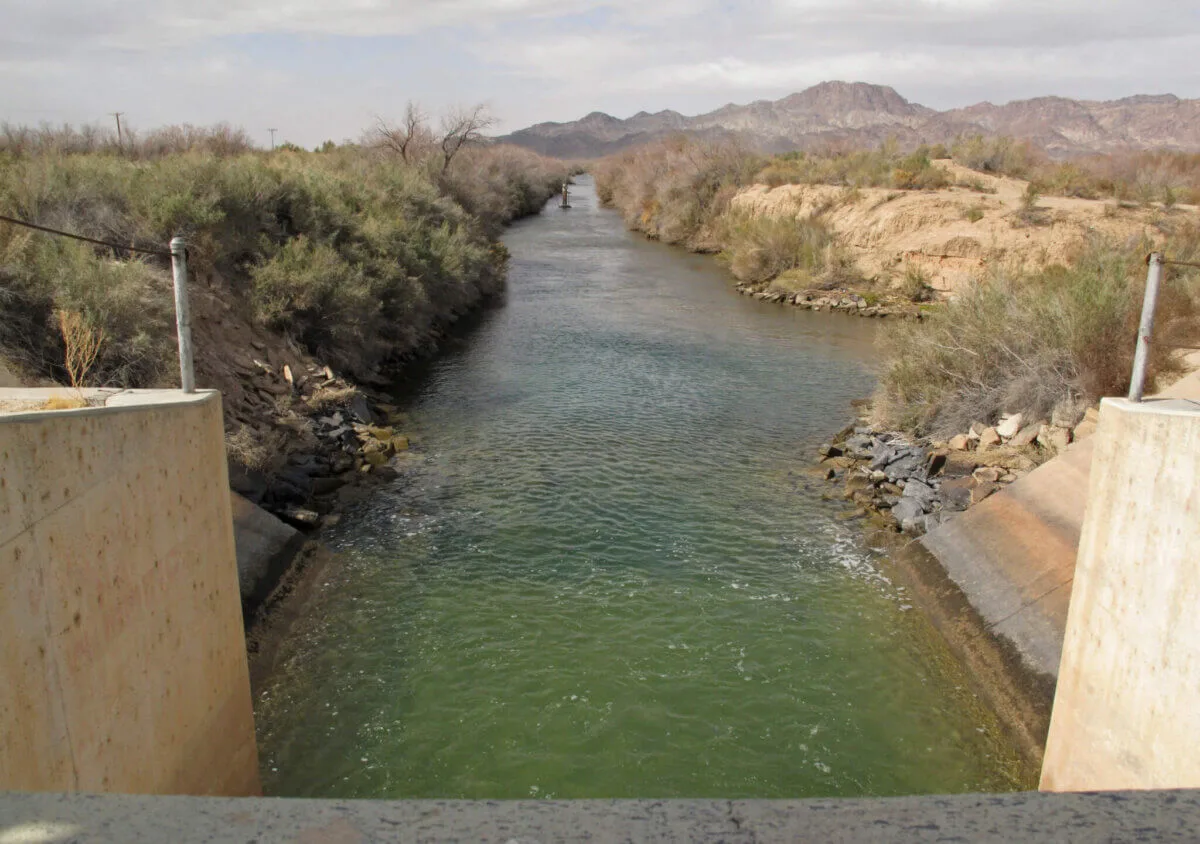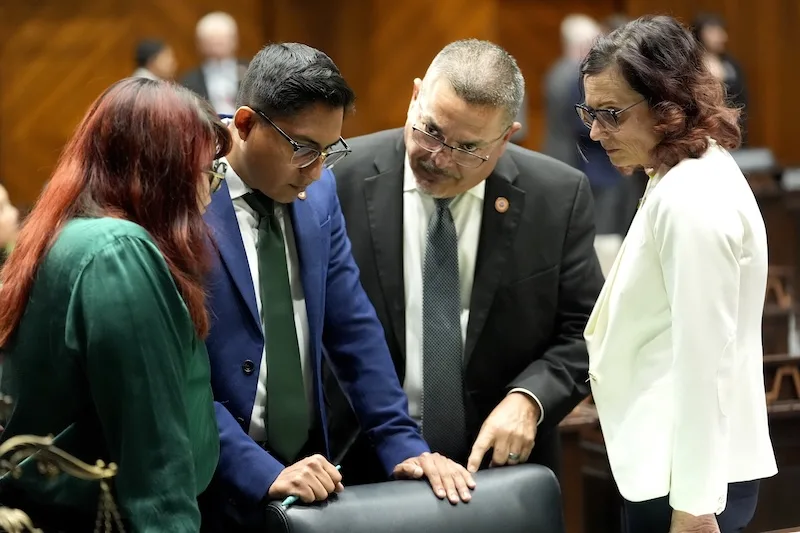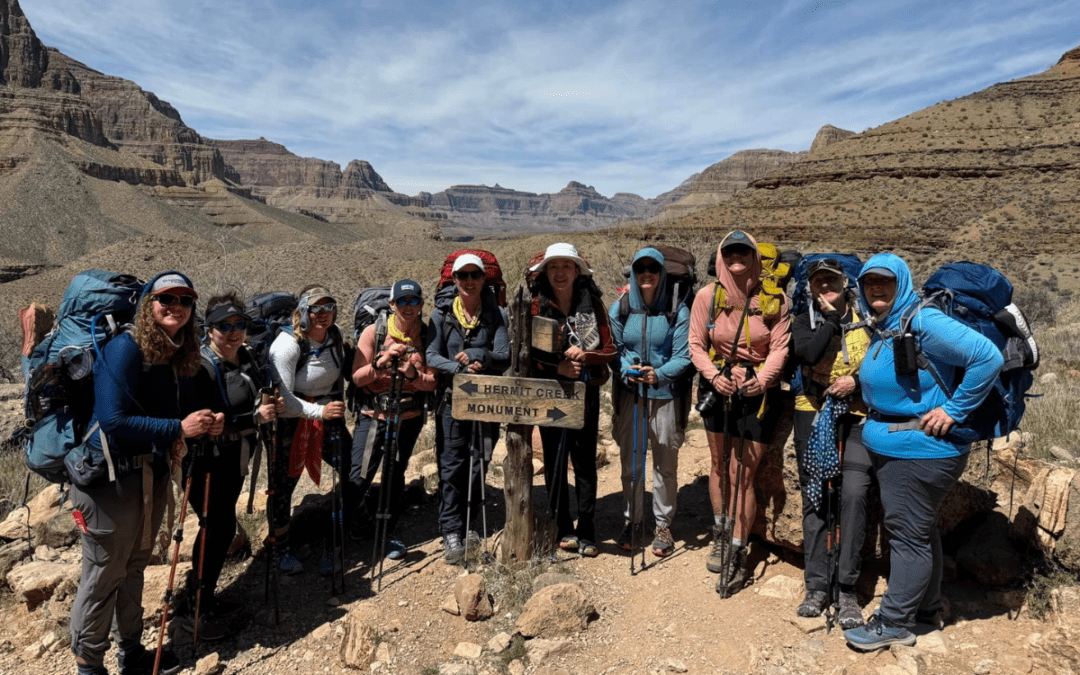
FILE - This photo shows Colorado River water running through farmland on the Colorado River Indian Tribes reservation, Feb. 19, 2018 in Parker, Ariz. (AP Photo/Felicia Fonseca, File)
In Arizona, citizens are facing what’s been suggested to be the greatest challenge since the area was settled and modern cities were developed: a growing water shortage that threatens the state’s way of life.
Federal and state officials have in recent weeks taken steps to address the crisis, and most recently, the Bureau of Reclamation, the federal agency responsible for overseeing water resource management, announced five new water and energy efficiency grants to the state of Arizona through its WaterSMART Project.
WaterSMART grants aim to address the serious water challenges that the American West faces. These grants are part of President Biden’s Bipartisan Infrastructure Law, and they’ll support local community projects, such as measuring water flow, automating water delivery, and lining canals.
Water Issues in the West
Arizona’s reserves for 40% of its water, which comes from Lake Mead on the Colorado River, is being drained faster than it can be filled, according to Western Resource Advocates (WRA). According to projections, if no action is taken to address this gap between supply and demand, Lake Mead could reach a “critical stage,” which would trigger stricter mandatory restrictions on water usage. This could lead to devastating effects across all sectors in Arizona, from the economy to agriculture to the environment.
The effects of drought and water shortages have been seen most immediately in the Rio Verde Foothills. Foothills residents have been without direct access to water since January, as their previous supplier—the city of Scottsdale—cut them off from accessing their water infrastructure, citing severe water shortages. As a result, Foothills residents have had to haul water themselves, at great cost, and many have had to restrict necessities like bathing and farming as a result.
Without tangible steps to address the state’s water issues, more communities could face those sorts of crises in the future.
The 2023 WaterSmart grants awarded to Arizona, however, aim to address some of the state’s challenges.
2023 WaterSMART Grants
The Metropolitan Domestic Water Improvement District, which is located near Tucson, has been allocated $2 million to replace over 11,000 existing water meters for residential, commercial, and irrigation customers. New, advanced meters, along with electronic endpoints and a network of communication equipment will also be installed. This will reduce the need for groundwater pumping and water from the Colorado River, also according to the Bureau of Reclamation.
The Paloma Irrigation and Drainage District, located in Maricopa County, has also been awarded $2 million to replace several manually controlled Jack Lift gates and slide gates, which both control discharge of dewatered biosolids, grit, and screenings. The water that will be conserved will remain in the Colorado River system for longer periods, which will allow for a more reliable water supply, and will help to avoid allocations during times of drought, the bureau states.
Local advocates have said that they’re excited about these new grants.
“All water users in the Colorado River Basin must find ways to use less water, and we need to deploy innovative tools and strategies to get there,” said Haley Paul, Arizona policy director for the National Audubon Society, which is part of the Water for Arizona Coalition, a nonprofit whose mission is to ensure water security for all people.
The Buckeye Water Conservation and Drainage District, which is located near Phoenix, has also been awarded $5 million to help modernize the existing concrete intake structure on the Gila River. The district will also install a new sluice structure, which is a barrier that helps control the flow rate and water level in open channels such as rivers and canals. The funding allocated to the district will also go towards the construction of a “regulating reservoir” which will allow for reduced groundwater pumping.
According to the Bureau of Reclamation, these changes, along with others, will allow for conserved water to remain in the Gila River for longer periods of time, thus increasing the reliability of the water supply for local communities.
Elsewhere, the town of Gilbert has been given $1.9 million to install new metering systems as well. With this change, customers will be given detailed usage and leak detection information, which will help to offset the groundwater pumping in the area, the bureau states.
Finally, the town of Cave Creek, in the Sonoran Desert in northern Maricopa County, has been awarded $500,000 to convert their existing, outdated water meters as well. A communications network and a new meter data management software system will also be installed, and the system will then connect to a cloud based network. The Bureau states that this project is expected to result in annual water savings of 148 acre-feet currently lost to leaks.
Paul said that these grants will allow Arizonans to deploy cutting edge water-saving technology to reduce water use, and said that if successful, these tools can be implemented more widely across the Colorado River Basin in the future.
“Three of the funded projects in Arizona include Advanced Metering Infrastructure that will not only provide water customers with real-time information about their water use and help them detect leaks, it will help the water providers save thousands of acre-feet of water,” she said. “The other two funded projects in Arizona will help agricultural water users apply water more precisely to their fields, leaving more water in nearby rivers and reducing groundwater pumping, benefitting local ecosystems and communities.”
Kim Mitchell, senior water policy advisor for Western Resource Advocates, which is also part of the Water for Arizona Coalition, offered her thoughts as well.
“As our water supplies face unprecedented pressure as a result of hotter and drier conditions, it’s imperative that we implement smart policies to ensure water security for our state,” she said. “Improving water efficiency with upgraded water delivery infrastructure, automated head gates, and advanced water metering are all innovative practices that help meet the needs of our communities, farms, and ecosystems that depend on flowing rivers.”
Politics

Democrats clear path to bring proposed repeal of Arizona’s near-total abortion ban to a vote
Democrats in the Arizona Senate cleared a path to bring a proposed repeal of the state's near-total ban on abortions to a vote after the state's...

It’s official: Your boss has to give you time off to recover from childbirth or get an abortion
Originally published by The 19th In what could be a groundbreaking shift in American workplaces, most employees across the country will now have...
Local News

Where to buy farm-fresh eggs in Tucson
Once you’ve tasted farm-fresh eggs, it’s hard to go back to the store-bought variety. Not only do farm-fresh eggs taste better and have...

How Arizona women are helping each other gain confidence in outdoor adventuring
Two female-oriented outdoors groups in Arizona encourage women to get on the trails, and to not be afraid of doing it solo every once in a while....



